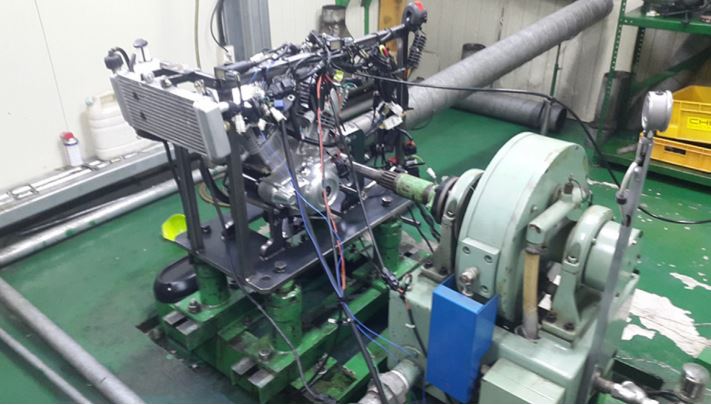The effects of combustion duration on residual gas, effective release energy, engine power and engine emissions characteristics of the motorcycle engine
The authors of this paper are: Nguyen Xuan Khoa (a), Ocktaeck Lim (b). (a) Graduate School of Mechanical Engineering, University of Ulsan, 93 Daehak-ro, Nam-gu, Ulsan 44610, South Korea. Nguyen Xuan Khoa is a lecturer of Automotive technical Faculty of HAUI. (b) School of Mechanical Engineering, University of Ulsan, 93 Daehak-ro, Nam-gu, Ulsan 44610, South Korea. Was published on the Applied Energy Journal Vol.248( 2019) 54-43

ABSTRACT
The purpose of this research is to study how combustion duration affects the performance and emission characteristics of motorcycle engines. From the results, the researcher is able to know the best combustion duration value that gives the target engine torque, NOx, CO and HC emission. To achieve this goal, an experimental system was installed within a dynamo testing system, and a simulation model was established using AVL-Boost software. The simulation model was used to determine the residual gas ratio, effective release energy, and engine emission characteristics in variable combustion durations (40–110 degrees crank angle). An engine speed band of about 3000–10,000 rpm was adopted throughout the experimental process. It is worth noting that the combustion duration had a significant effect on the residual gas ratio, effective release energy, engine performance, and emission characteristics. When the engine speed was 6000 rpm at a combustion duration value of 80 degrees, the minimum residual gas ratio was 0.22%. At a combustion duration value of 60 degrees, the maximum effective release energy was 0.826 KJ. At the engine speed was 7000 rpm and 8000 rpm, the minimum residual gas ratio was 0.14% and 0.15%, respectively; the maximum effective release energy was 0.831 KJ and 0.8247 KJ at 110 degrees and 80 degrees combustion durations respectively. This research also pointed out the optimal combustion duration at each engine’s speed. Also, the residual gas had a close relationship with engine emission characteristics. At 6000 rpm and 60 degrees combustion duration, the maximum engine torque was 22.7 Nm and the minimum BSFC was 320 g/(KWh).
Keywords: Combustion duration, Residual gas,Engine torque, Engine power, Effective release energy, Emission characteristics
Download this paper from this link: /media/29/uffile-upload-no-title29502.pdf
Thứ Sáu, 15:46 03/05/2019
Copyright © 2018 Hanoi University of Industry.